Tom's Guide Verdict
The Contour Unimouse is a unique ergonomic aid that makes pointing and clicking more comfortable with its adjustable hinge and thumb rest, which let you transition this 6-button clicker from flat to vertical and vice-versa.
Pros
- +
Remarkable adjustability
- +
Black plastic design feels sturdy
- +
6 remappable buttons are nice to have
Cons
- -
Finicky DPI settings
- -
Hinge could weaken or break over time
Why you can trust Tom's Guide
Price: $79 (wired), $89 (wireless)
Max DPI: 2,800
Buttons: Seven
Size: 4.7 x 3 x 2.2 inches
Weight: 4.8 ounces
The wireless Contour Unimouse ($89) is an intriguing mouse that aims to be more ergonomic than most thanks to its adjustable hinge, which lets you tilt the body of the mouse up to 70 degrees in the air.
Having the option to adjust the shape of the mouse does seem to make it more comfortable to use, at least in my experience. After using our Unimouse review unit with my main PC for a few weeks I'm pleased with how nice it feels to be able to fine-tune the tilt of the mouse to my liking on a day-to-day basis.
I also like the 7 buttons (6 of which are programmable) you get on the Unimouse, since it can sometimes be hard to find good vertical mice that also offer more than 3-4 buttons. But after some time putting it through its paces, I'm also a little frustrated by some of the choices made when designing the Unimouse.
Still, I think for the price it's easily in contention to be the best mouse and best wireless mouse for folks who want something between a typical two-button clicker and a vertical mouse. In this Contour Unimouse review I'll walk you through why.
Contour Unimouse review: Price and availability
The Contour Unimouse is available for purchase right now from Contour's website as well as third-party retailers like Amazon. The wired version costs $69 while the wireless version we review here costs $79.
The wireless Unimouse comes with a USB-A to micro-USB adapter cable and a USB-A wireless dongle, so you can connect the mouse wirelessly.
Contour Unimouse review: Design
The first thing you'll notice about the Contour Unimouse is that it looks different. Specifically, it looks like some low-slung black plastic beast that's halfway between a typical mouse and a vertical variant. The body of the mouse sticks up from the base at an angle that's adjustable from 35-70 degrees, and the adjustment process is as simple as grabbing and pulling.
Get instant access to breaking news, the hottest reviews, great deals and helpful tips.
Obviously this giant hinge on the mouse is an additional point of failure that could break some day, but in my weeks of use it felt sturdy enough to hold up to at least a few years of semi-regular adjustment.
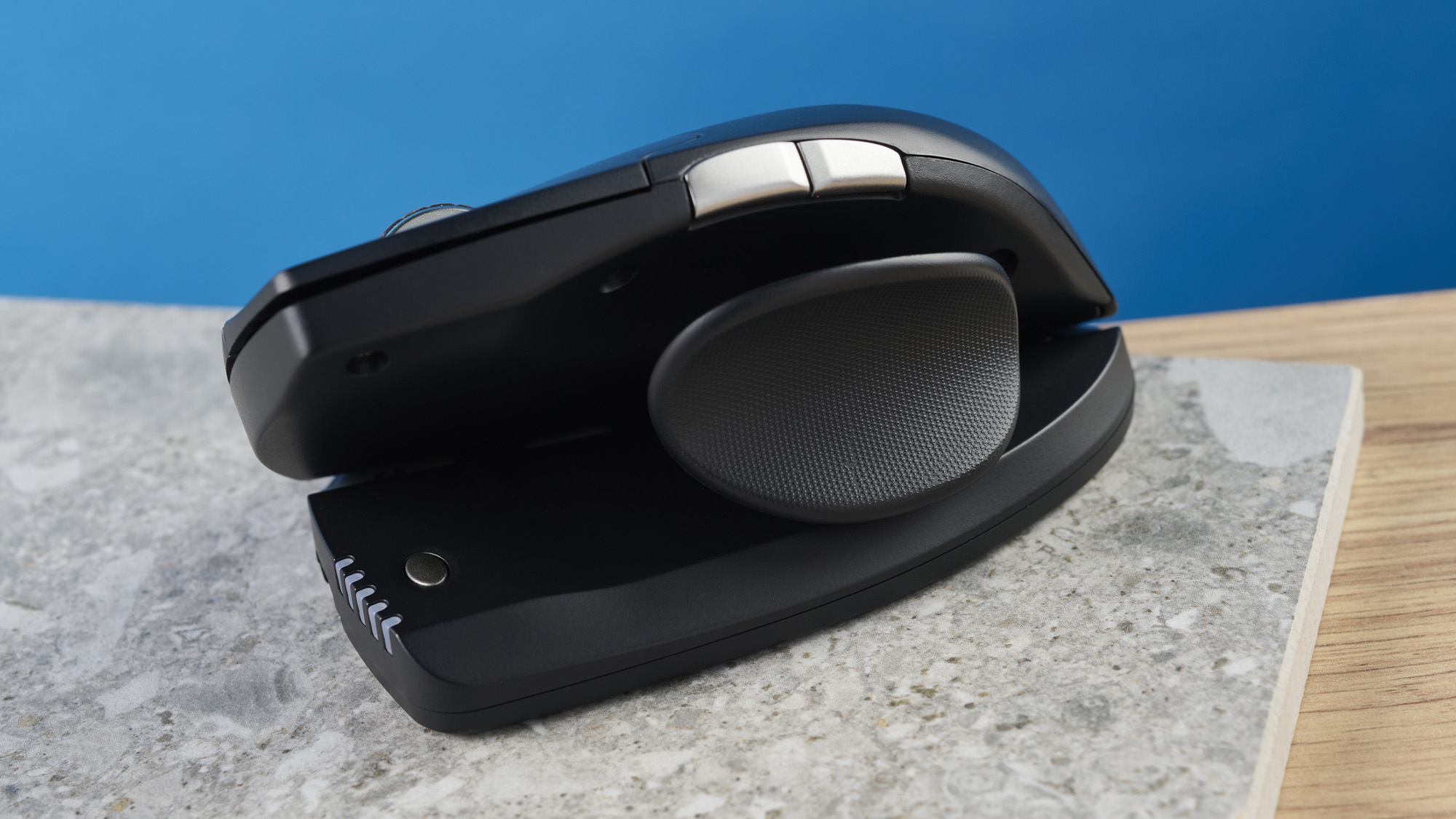
In addition to adjusting up and down like a yawning mouth of a mouse, the Unimouse also has an adjustable thumb rest sticking out from the lefthand side of the mouse. You can slide the thumb rest in and out or forward and back along the back of the mouse, giving you a good amount of room to customize the shape of the mouse to your liking.
That's the limit of the physical adjustments you can make to this mouse, but it also offers an adjustable DPI setting to customize how quickly the cursor moves when you move your wrist.
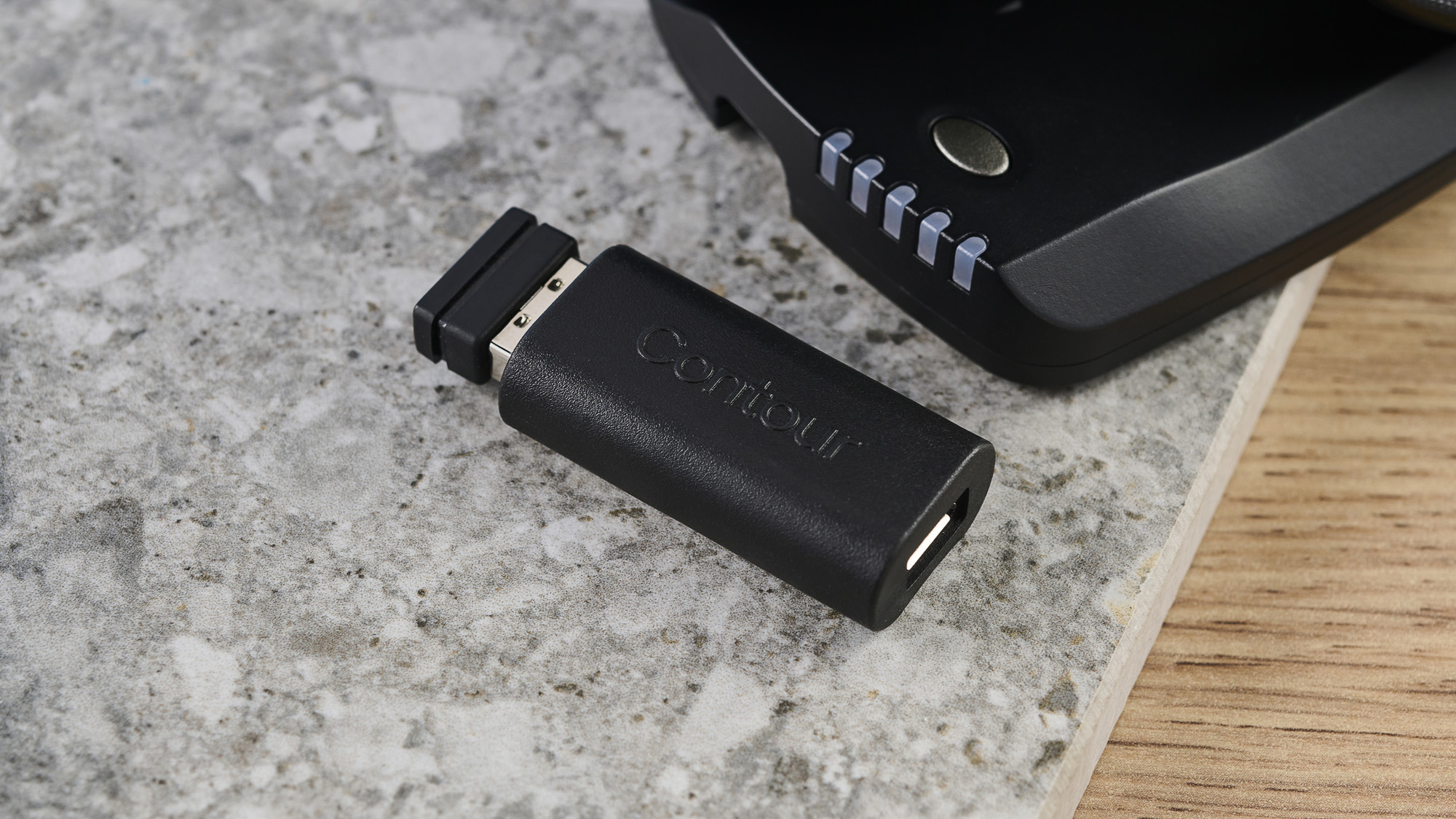
You can switch between DPI settings using the plastic silver button on the base of the mouse near the front, and the five LED lights in front of it will show what DPI level you're at as you hit said button. Beneath the LEDs is a micro USB port you can use to charge the mouse or wire it to a PC for use.

In addition to the DPI speed button you get six programmable buttons on the Unimouse. Three sit beneath your fingers, and while the right and left buttons default to right- and left-click, respectively the middle button defaults to double-click.
Meanwhile, on the lefthand ridge where your thumb typically rests are another small pair of programmable buttons which, by default, trigger forward and back commands when browsing. Finally, the scroll wheel that rests just to the right of your index finger can be pushed in and used as an additional button you can program.
Contour Unimouse review: Features
Sure this mouse has programmable buttons and a rechargable battery, but those are common features for mice. The big feature that sets the Unimouse apart from all the rest is its remarkable adjustability thanks to its hinged design, which few mice can match.

This is the main selling point of this mouse, so I wanted to take time to talk about how useful and comfortable it feels to have a mouse you can bend and adjust a bit. I've been diagnosed with RSI (repetitive strain injuries) in both hands and wrists so I've spent years relearning how to use basic equipment like mice and keyboards without pain. The Unimouse isn't a cure for my pain and using it hasn't fixed my concerns or made day-to-day computing a pain-free experience.
What it has done is given me some welcome room to adjust the mouse to my comfort level, which is something almost no other mouse can offer. Sure, I don't always want a mouse that's angled in the specific way the Unimouse is angled, and in those times I switch to a trackball or another input device.
But if I wanted a traditional mouse and wasn't sure whether I should go with a flat or vertical variant, I think the Unimouse is a good middle ground that gives you some room to move between either configuration. I don't know if it's the perfect mouse for me, but I'm glad to have it as an option.
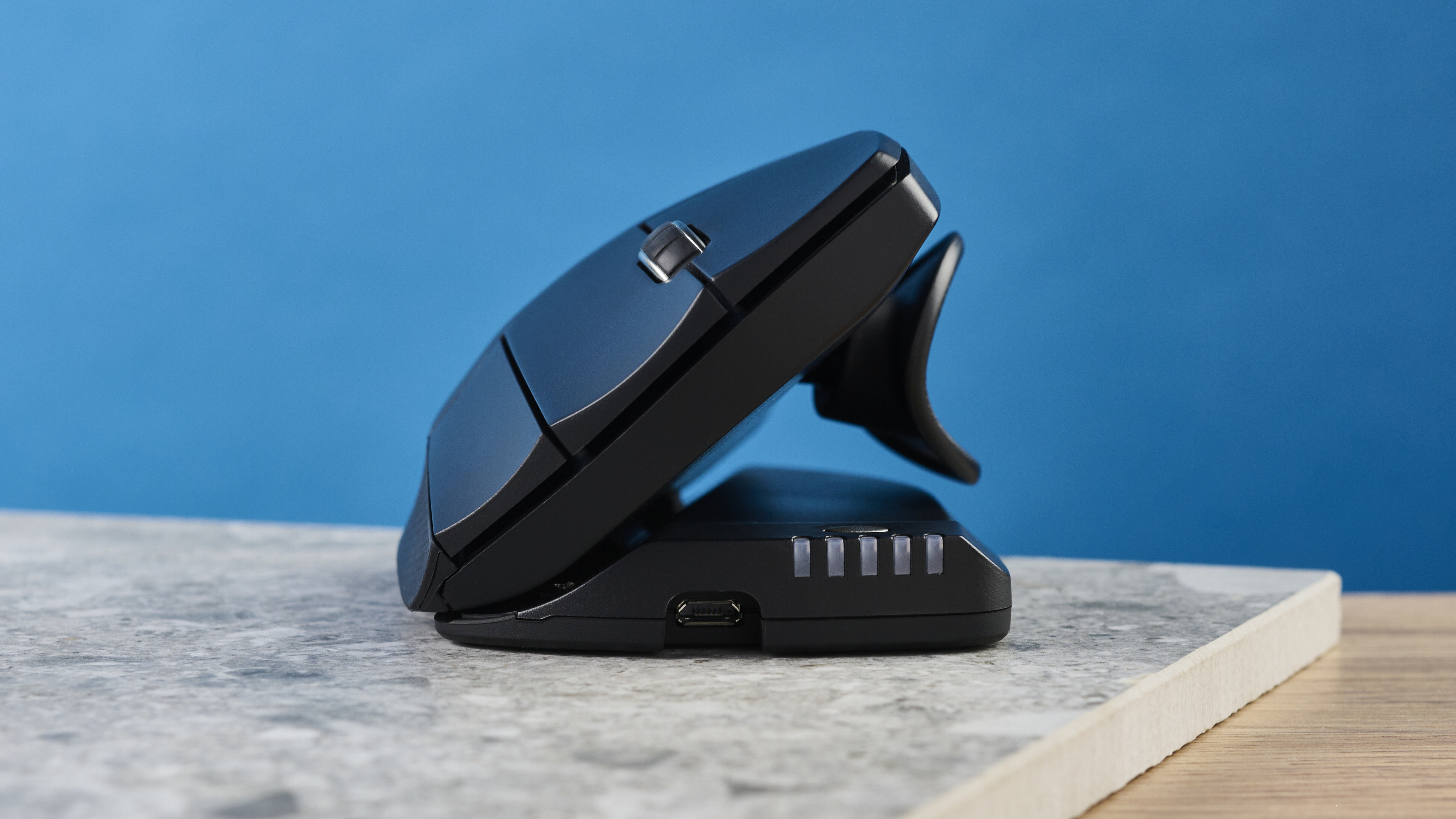
I also appreciate having the option to quickly flip between DPI settings by hitting the small plastic button near the front of the base of the mouse, and it's nice to quickly see how high the setting is via the ratio of green to red LEDs lit up on the mouse. These LEDs are also used to show the battery life remaining when you hit the DPI button once, which is a nice touch.
The DPI is adjustable between 800-2800, so you get lots of room to move. However, I found the process of testing different DPI modes for comfort and quickly switching between them to be kind of a hassle on the Unimouse, because the button sometimes didn't register my press so I had to keep my eyes glued to the LEDs on the mouse. This made it tricky to also watch my cursor moving across the screen to see if it was comfortable, and while I worked it out in the end it seemed a needless hassle that would have been avoided with a more responsive button or a different way to adjust DPI.
Contour Unimouse review: Performance
After using the Contour Unimouse as my primary point-and-clicker for a week or two, I'm happy to report it's a comfortable experience—once you get used to it.
At first, the strange arched design of the Unimouse may feel uncomfortable underneath your hand. I was able to circumvent this by extending it to its full height and pulling the thumb rest out as far as it could go, but you may have to try a different solution if you find it similarly uncomfortable.
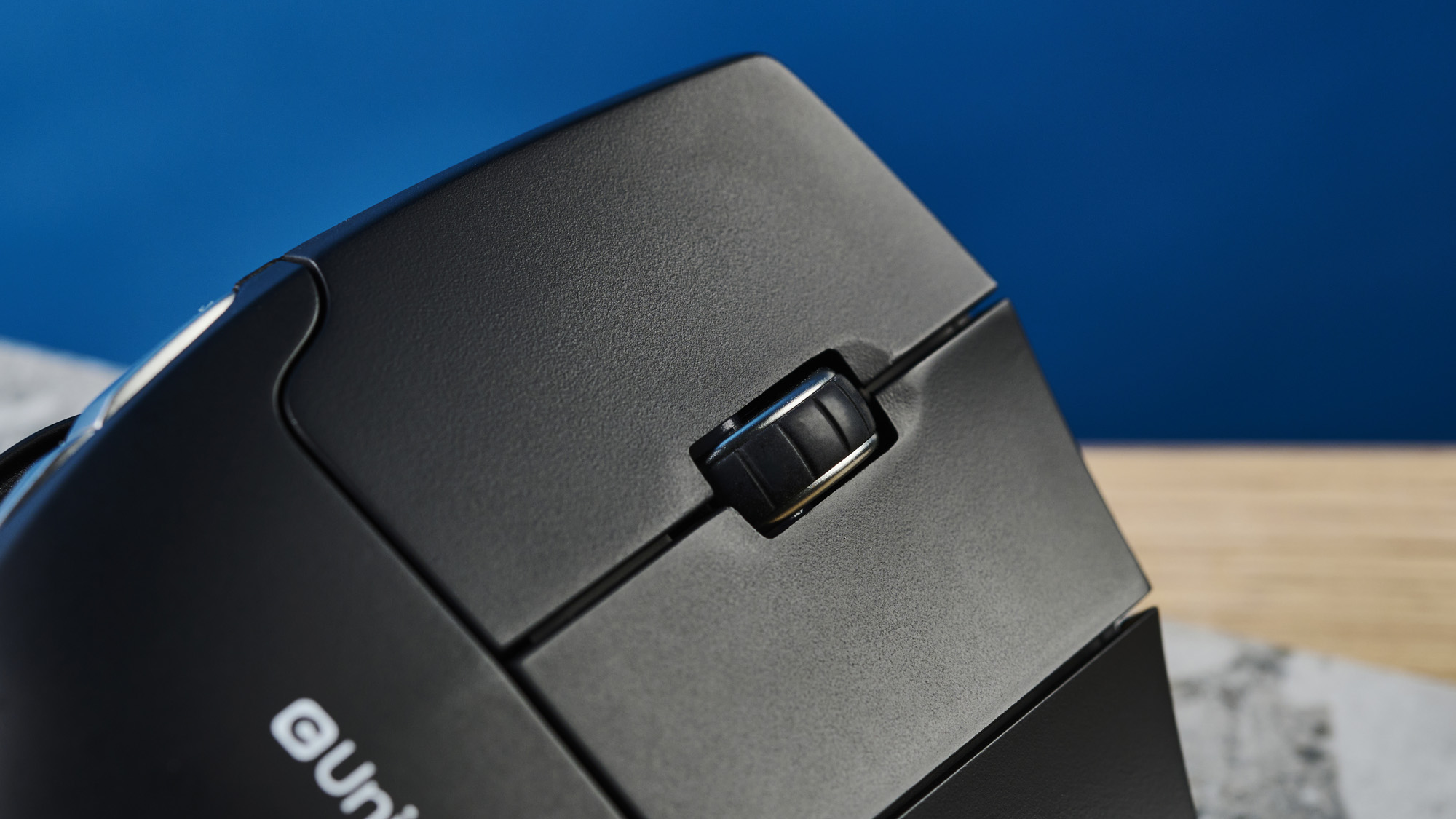
But that's the nice thing about this mouse, right? If you don't like the way it feels beneath your hand, you have some room to adjust it to see if another angle or size might suit you better. So while I personally don't like using it much lower than full extension, that might be because I have big unwieldy gorilla paws for hands and sausages where my fingers should be.
Someone with smaller or longer hands might be more comfortable using the Unimouse in a different configuration entirely. And while that makes it tricky to recommend since I can't say for sure how comfortable or ergonomic this mouse is for everyone's hands, I can say that it has more room for adjustment to suit your tastes than any mouse I've ever used.
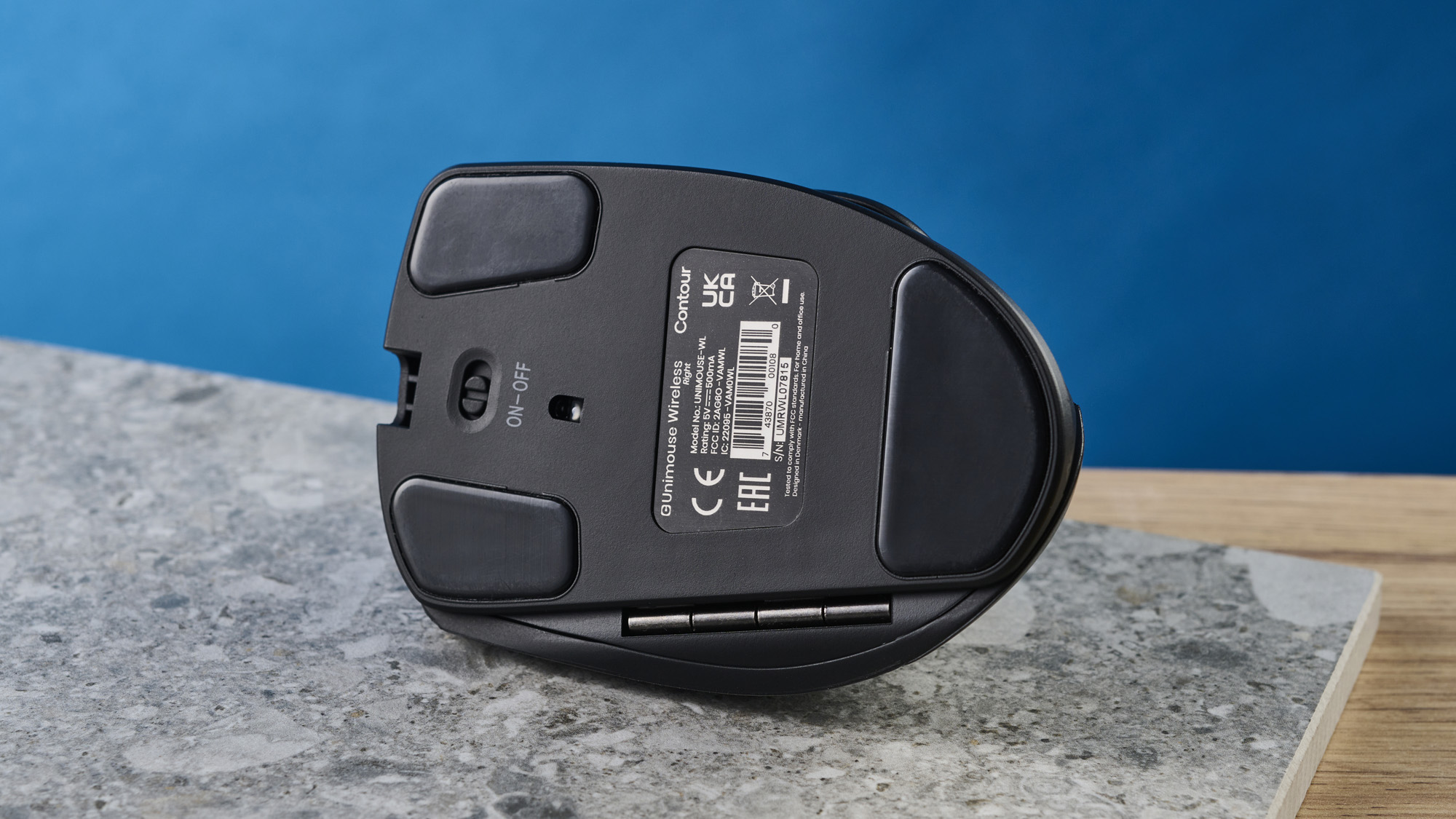
Of course, this is to some extent true of all computing devices. There is no one-size-fits-all ergonomic solution for mice, keyboards or anything else because everyone is different and thus has different comfort needs. It's taken me years to find devices I can comfortably use after getting my RSI diagnosis, and I expect lots of other people are in a similar boat. And while I can't say for sure whether the Unimouse will perform well enough to meet your needs, I can say it lives up to the manufacturer's promise and performs as well or better than any non-adjustable mouse I've ever used.
Contour Unimouse review: Verdict
The Contour Unimouse truly stands out from the pack with its eye-catching hinged design, adjustable thumb rest and front-mounted LED strip. After a few weeks of use I've come to really appreciate the room it affords me to customize how my mouse feels throughout the day, even if I mostly keep it standing tall for maximum comfort.
But what works for me ergonomically may not work for you, which makes devices like this tricky to recommend. Personally I think I prefer to use a trackball over the Unimouse, but that's because I prefer them in general over vertical mice. If you like vertical mice and want more adjustability or aren't sure whether a vertical mouse is the right choice for you and want some room to go back to flat, the Unimouse is a great mouse for the price.
You could also go with something like the Logitech Lift if you want a more traditional vertical mouse without adjustable parts that might break, but since the wireless Lift costs as much as the wired Unimouse ($69) offers fewer features you're actually getting slightly less for the price.

Alex Wawro is a lifelong tech and games enthusiast with more than a decade of experience covering both for outlets like Game Developer, Black Hat, and PC World magazine. A lifelong PC builder, he currently serves as a senior editor at Tom's Guide covering all things computing, from laptops and desktops to keyboards and mice.

